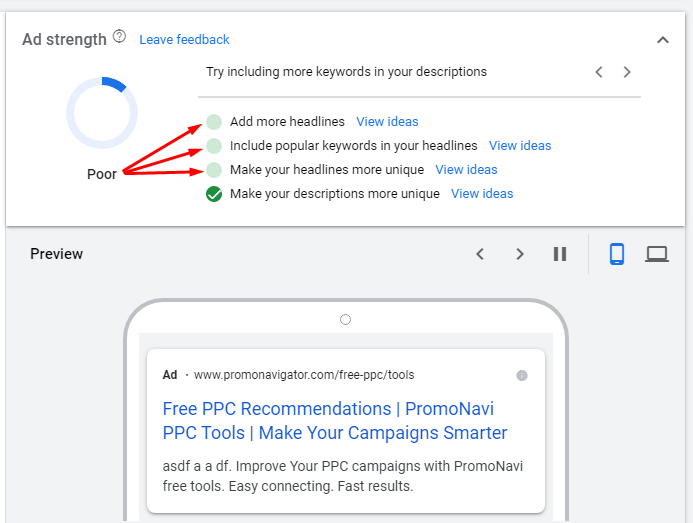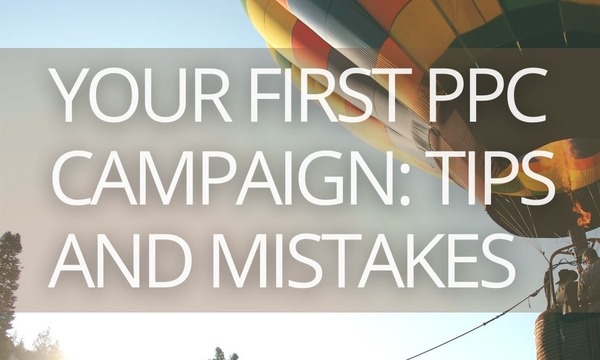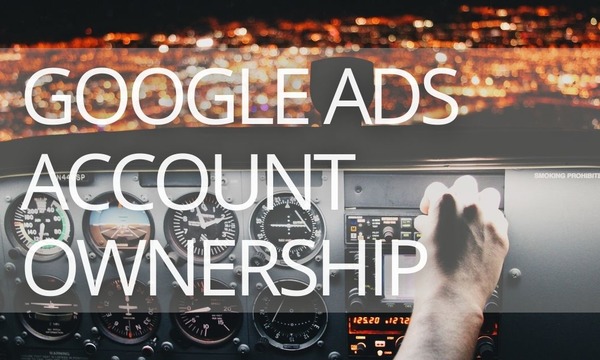AI-based Smart Bidding strategies optimize your bids for conversions and conversion value in every auction using real-time data. Google’s algorithms make decisions based on much more factors than available to advertisers who optimize their campaigns manually. That is why, in an ideal world, Smart Bidding should drive better results than manual bidding.
Nevertheless, not all the advertisers who tried Smart Bidding see an increase in PPC performance. For this reason, they conclude that Smart Bidding doesn’t work and shift back to manual bidding that gives them “more control,” as they used to say.
If this sounds all too familiar (or you’re planning to switch Smart Bidding for the first time), you should look through the list of the reasons why Smart strategy may not give you the result you’re expecting.
What is Smart Bidding, and Why is It Better Than Manual Bidding
Smart Bidding strategies are the subset of Google’s automated bid strategies. These strategies are Target CPA, Target ROAS, Maximize conversions, Maximize conversion value, and Enhanced CPC.
Smart Bidding uses machine learning to adjust bids in real-time and reach your goals; the system considers a wide range of signals to tailor bids to the user’s unique context.
When you use manual bidding, you are faced with their pitfalls:
- Manual bidding is based on past data. However, the current situation in the auction (and in the market as well) may differ significantly, and adjustments may be ineffective.
- Manual bidding considers clicks and costs but does not take into account the conversion probability.
In contrast, Smart Bidding operates real-time data and adjusts bids based on the conversion probability for specific users, considering their location, device, interests, and other data, that is unavailable to advertisers.
Smart Bidding has its pros:
- During seasonal and other significant changes Smart Bidding allows you to automatically adjust bids according to the current situation.
- Google’s algorithms consider changes in search trends, and not only the data from your account.
- It allows you to control budgets, the reaching of goals, and take advantage of machine learning.
The key Smart bidding pros is that you can focus on the valuable metrics for your business, such as conversions, CPA, and ROAS, instead of focusing on ad spend and clicks. This means that you move to a more global level of management.
Despite these advantages, Smart Bidding does not always show better performance than manual bidding. There are various reasons for this—look through the following checklist to find what can go wrong with your campaigns.
#1: Follow the Conversion Tracking Requirements
Conversion and Conversion value tracking is the basic requirement for shifting to Smart Bidding. This seems like a common truth, but there are still accounts that do not have conversion tracking.
The other issue is that your account should have enough conversions if you want to enable Target ROAS or Maximize conversion value strategy. If your account is still “raw” and doesn’t have enough conversions, the better choice for you is Target CPA or Maximize conversions strategy.
Here are the requirements to the conversion data for Smart Bidding strategies:
| Maximize conversions | Target CPA | Maximize conversion value | Target ROAS | |
|---|---|---|---|---|
| The purpose of the strategy | Attract the maximum customers on a given budget | Drive maximum conversions for a target CPA | Provide maximum conversions value on a given budget | Drive the most valuable conversions to reach the target ROAS |
| Minimum number of conversions | – | – | – | 15 for the last 30 days |
| When it is better to enable the strategy | The strategy performs well for new accounts with a lack of data or when the conversion value is not critical for you | The strategy performs better if your account drives more than 20 conversions per month | The strategy performs better if your account drives more than 15 conversions per month | It is better to separate campaigns based on their ROAS |
| Recommended Impression Share | <90% | <75% | <90% | <75% |
| Conversion tracking requirements | Conversion tracking | Conversion tracking | Conversion + Conversion value tracking | Conversion + Conversion value tracking |
Please note that 3 of 4 Smart strategies don’t require any conversions on the initial stage. However, the more conversions you have, the faster the system will learn and drive the results you’re expecting. That’s why, if you’ve just run your campaign, we recommend you to wait for one or two weeks to collect the data, and only after that should you enable Smart Bidding.
#2: Make Sure Your Attribution Model is Not “Last Click”
The “Last click” attribution model is a good choice for manual bidding campaigns. If you shift to Smart Bidding, especially when the conversion delay time is significant, you should set up another attribution model.
The best choice for Smart Bidding is the “Data-driven” attribution model. In this case, each keyword would receive part of the credit depending on how much it contributed to driving the conversion.
Note! The “Data-driven” attribution model may be unavailable if your account has less than 300 conversions for the last 30 days. If so, choose another model: “Linear,” “Time decay,” or “Position-Based.”
#3: Create Not Too Granular Ad Groups
When it comes to ad groups, the worst thing you can do is to split your campaign into multiple ad groups with 1-2 keywords in each of them. This strategy will impede Smart Bidding algorithms to efficiently learn and find users based on search intent, not the exact keyword matching.
While creating ad groups for Smart Bidding, you should consider the following best practices:
- Create intent-based ad groups (so-called STAGs)—meaning that each ad group will match its topic.
- Choose the topics considering that each ad group should perform no less than 3k Impressions per week.
9 Win & Loss Strategies for PPC Keyword Grouping [+Examples]
#4: Reach Excellent Ad Strength for Your Responsive Ads
Follow these best practices while creating adverts for Smart Bidding:
- Add as many ad elements as possible: for Search ads—add at least 10 headlines and 4 descriptions; for Display ads—add at least 3 photos, 3 videos, 10 headlines, and 4 descriptions.
- Add all the extensions that are reasonable for your campaign. The most important are call extensions, sitelinks, prices, and callouts.
- Don’t duplicate headlines and descriptions, even partially.
- Separate headlines and descriptions and their combinations should be useful and meaningful to your potential customers.
- Include the main keywords from the ad groups in your headlines and descriptions.
You can check if your ads match best practices using Google’s Preview tool. Try to reach “Excellent” ad strength for each ad.
#5: Do Not Apply Exact Match for Your Keywords
Exact-match keywords are not a good idea if you decide to leverage Smart Bidding. They narrow targeting and don’t allow AI algorithms the opportunity to uncover the most effective keywords for your goals.
We recommend you target Broad match keywords. As you get impressions, you should top-up your negative keyword list to cut non-targeted traffic. A couple of weeks later, you will have an extensive negative keyword list, and there will be the right time to enable Smart Bidding.
Note! In February 2021, Google phased out the Broad match modifier. Now, Broad match modified keywords show the same behavior as Phrase match keywords. You can learn about actual keyword matching options in Google Ads from our guide.
#6: Target Your Audiences in Observation Mode
When you add remarketing and similar audiences, as well as client lists, don’t narrow targeting by enabling the Targeting option. You should show ads in Observation mode. In this case, the system will have all the data to optimize for selected audiences.
#7: Make Sure You’ve Set Enough Daily Budget
An insufficient daily budget may be the reason why your Smart Bidding underperforms.
When setting up a daily budget, you should consider these two points:
- Your campaign shouldn’t be limited by budget. This status appears when your average daily budget is lower than the recommended amount. To fix this issue, you should increase your daily budget to the recommended level.
- If you apply the Target CPA strategy, your daily budget should be higher than 5-10x tCPA (the higher, the better).
- For Maximum conversions or Maximum conversion value strategies, the system will strive to spend all the daily budget amount, so don’t set up more than you can afford for a specific campaign.
If conversions in your niche are expensive so that you can’t afford to set a daily budget of 5-10x tCPA, you should try these tips:
- Track micro conversions. For example, towards the purchase, a customer goes through several stages, such as adding a product to the cart, signing up, payment, etc. You can track these events as conversions to lower your tCPA.
- Enable Maximum conversions or Maximum conversion value strategies instead of Target CPA and Target ROAS.
- Enable Portfolio strategy and set up a shared budget for several campaigns.
#8: Check if the Target CPA Complies the Average Value in Your Niche
If conversions in your niche cost $100, that would be a mistake to set tCPA value of $10—the system wouldn’t be able to drive conversions on that price.
Here are some points to keep in mind while setting up a target CPA and ROAS:
- If you are launching a campaign from scratch, set a realistic goal and not limit your budget.
- For active campaigns, find the average CPA and ROAS values for the last month and set them as target values.
For the Target ROAS strategy, it would be reasonable to set tROAS a little lower than the average value; for the Target CPA strategy, and vice versa, you can increase tCPA to give algorithms more opportunities to optimize.
#9: Don’t Apply Changes to Your Account Often
After you launch a Smart bidding strategy, the system needs two weeks to learn. For about two weeks after the launch, the system gathers data.
During learning time, your campaigns may underperform.
The common mistake is to stop campaigns during this time or trying to «fix» something. When you make changes, the system starts to learn from scratch—meaning that you have to wait a month more for reaching your KPIs.
Smart bidding requires patience. If you rush to make conclusions or change settings, it would be challenging for you to benefit from Smart bidding.
#10: Check if Your Impression Share Under 75%
If your Impression Share exceeds 75%, Google’s algorithm can’t significantly optimize your campaign because you reach almost the whole of your target audience.
To fix this issue, you should expand your target audience: add more keywords, target new locations, change Phrase match to Broad match, etc.
Also, check Google’s recommendations to expand your audience reach. By applying these recommendations, you’ll give the system more opportunities for reaching your goals.
Smart Bidding Checklist: How to Make the Most of Google’s AI
When you run Smart Bidding and see no results, or you’re just planning to enable Smart Bidding, you should check the following points to make the most of your campaigns:
- Set up conversion tracking and consider the conversion requirements when choosing a Smart bidding strategy.
- Shift from the “Last Click” attribution model to the “Data-Driven” model or another model (“Linear,” “Time-Decay,” or “Position-Based”).
- Create intent-based ad groups instead of too granular keyword-based ad groups.
- Make sure your responsive ads are well-optimized. Try to reach “Excellent” ad strength for each ad according to Google’s Preview tool.
- Avoid targeting exact-match keywords—broad match and, in cases when word order matters, phrase match keywords will be a better choice.
- Target your remarketing, affinity, in-market, and other audiences in “Observation” mode.
- Make sure your daily budget is enough to reach your target CPA or ROAS.
- Don’t set too low a Target CPA—it should comply with the average CPA value in your niche.
- Don’t rush to perform changes to your account—give the system 3-4 weeks to learn and to collect data.
- If your Impression Share exceeds 75%, you should expand your audience reach.
Follow these tips, and your Smart bidding will fly!
Boost your Google Ads performance! Link your PPC accounts to PromoNavi to automate everyday tasks and receive valuable recommendations on how to improve your campaigns.
With PromoNavi, you can do keyword research, competitor analysis, automate reporting, track your PPC performance on the Analytics Dashboard, and get profitable PPC optimization recommendations.





